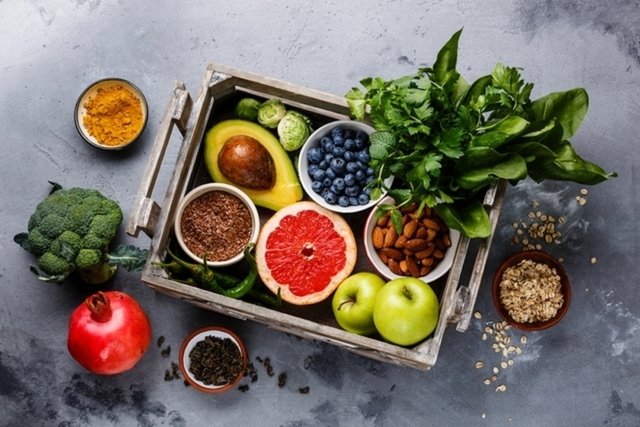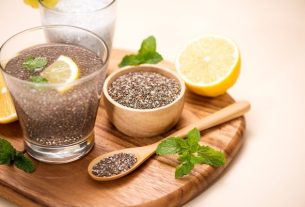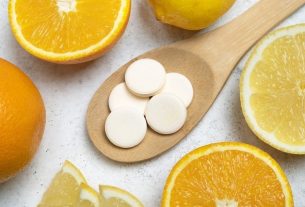Flavonoids are antioxidant, antiviral, antibacterial and anti-inflammatory compounds that can be found in some foods, especially medicinal plants, fruits and vegetables.
These compounds are not produced by the body, and it is important that they are obtained through a healthy and balanced diet. Only in this way is it possible to guarantee the health benefits of flavonoids, such as regulating cholesterol levels, relieving menopause symptoms and reducing the risk of chronic diseases.
In addition to being consumed through the diet, flavonoids can also be used in the form of supplements, which can be found in pharmacies, health food stores or on the internet. Flavonoid supplements should be consumed under the guidance of a nutritionist or doctor, because it is believed that high concentrations of flavonoids can reduce the absorption of some vitamins and minerals, as well as interfere with thyroid function.

What are flavonoids for?
Flavonoids serve to:
- Fight infectionsas it has antimicrobial activity that helps fight viruses and bacteria;
- Delay premature aging and keep skin healthyas they prevent damage caused by free radicals to cells;
- Prevent cardiovascular diseasesas they help reduce “bad” cholesterol, LDL, preventing the formation of fatty plaques inside blood vessels and reducing inflammation of these vessels, which helps improve blood circulation and lower blood pressure;
- Prevent canceras some studies suggest that flavonoids can interact with several genes and enzymes, inhibiting cell proliferation and improving DNA repair processes and reducing oxidative stress, in addition to inducing the death of potentially cancerous cells;
- Relieve symptoms of menopause and PMSas some flavonoids act as phytoestrogens, whose composition is very similar to that of human estrogens and exert a similar action;
- Help with weight controlas it reduces inflammatory processes and the amount of leptin, which is considered the hunger hormone, controlling appetite;
- Increase bone densityreducing the risk of osteoporosis, since by acting as a phytoestrogen, it helps control the action of some hormones that promote bone absorption and prevent the loss of calcium in the bones.
Furthermore, regular consumption of foods rich in flavonoids helps prevent neurodegenerative diseases such as Alzheimer’s, senile dementia and Parkinson’s. This may be due to the antioxidant action of flavonoids, which in addition to protecting nerve cells from damage caused by free radicals, improve blood flow to the brain, maintaining cognitive and neuronal functions.
Foods rich in flavonoids
There are several types of flavonoids in foods:
1. Foods with flavones
The following table shows the quantity flavanonesuch as naringenin and hesperetin, a subtype of flavonoid, for every 100 grams of food:
2. Foods with flavonol
The following table shows the quantity flavonolssuch as quercetin, kaempferol and myricetin, a subtype of flavonoid, for every 100 grams of food:
3. Foods with flavonones
The following table shows the quantity flavononessuch as luteolin, apigenin and tangeretin, a subtype of flavonoid, for every 100 grams of food:
4. Foods with anthocyanins
The following table shows the quantity anthocyaninssuch as cyanidin, pelargonidin, malvidin and delphinidin, a subtype of flavonoid, for every 100 grams of food:
5. Foods with flavanol
The following table shows the amount of Flavanolsuch as catechin, epicatechin and proanthocyanidin, a subtype of flavonoid, for every 100 grams of food:
Daily flavonoid recommendation
There is no consensus on the amount of flavonoids that should be ingested per day to obtain all the benefits. However, maintaining a balanced and healthy diet, rich in fruits, vegetables, legumes, nuts and whole foods will be enough to obtain flavonoids naturally and contribute to health.
Bibliography
- ADAMCZAK Artur et al. Antibacterial Activity of Some Flavonoids and Organic Acids Widely Distributed in Plants. Journal of Clinical Medicine. 9. 1-17, 2020
- TABARI Mohammad et al. Flavonoids as Promising Antiviral Agents against SARS-CoV-2 Infection: A Mechanistic Review. Molecules. 26. 1-26, 2021
- KOZLOWSKA Aleksandra et al. Flavonoides- food sources and health benefits. National Institute of Public Health. 65. 2; 79-85, 2014
- DOLINSKY Manuela. Functional Nutrition. 1st. Brazil: Roca, 2009. 48-54; 134-153.
- CEDERROTH Christopher et al. Soy, phyto-oestrogens and male reproductive function: a review.. International Journal of Andrology. 2. 33; 304-316, 2010
- GUPTA Charu. Phytoestrogens as Pharma Foods. Advances in food technology and nutritional sciences. 2. 19-31, 2016

Sign up for our newsletter and stay up to date with exclusive news
that can transform your routine!
Warning: Undefined array key "title" in /home/storelat/public_html/wp-content/plugins/link-whisper-premium/templates/frontend/related-posts.php on line 12
Warning: Undefined array key "title_tag" in /home/storelat/public_html/wp-content/plugins/link-whisper-premium/templates/frontend/related-posts.php on line 13



